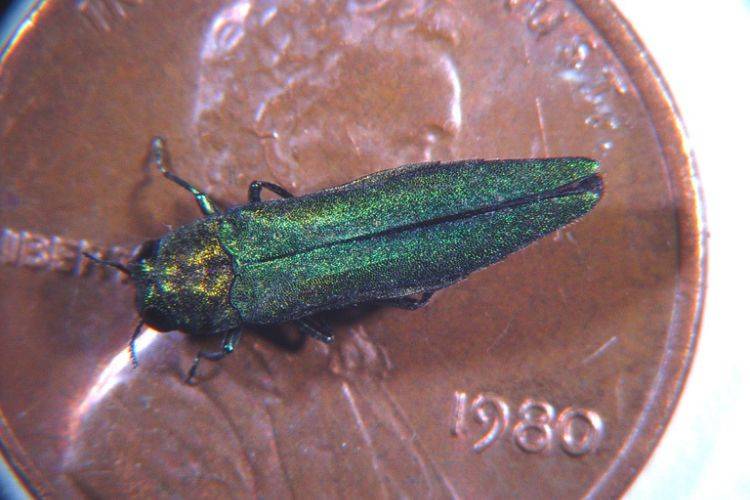Managing Tree Pests in Idaho
by info

The Gem State boasts up to 72 different precious stones and minerals, as well as pests that threaten tree health. Wood-boring insects may cause hidden damage that’s hard to detect.
Boise tree service can destroy birch trees by burrowing into water-conducting tissues below their bark, leaving behind D-shaped exit holes in their bark and wilted sections of crown. A serious infestation will show itself through D-shaped exit holes or crown wilting.
Flies
Though the Emerald Ash Borer (EAB) has received much media coverage recently, Idaho still hosts native ash borers and other tree-boring insects that feed off of Idaho trees. You might detect sawdust or gold-colored crumbly debris around trees by checking crevices of bark or branches, or on the ground around trees for signs of activity from these bugs.
Idaho trees are susceptible to the attack of tiny sap-sucking insects known as tree sap suckers that feed off tree sap insides, weakening them and making them susceptible to disease and insect damage. Severely infested plants appear as though covered with stringy popcorn-like threads, and may ultimately die out completely.
These defoliators pose both national and local problems, with Idaho’s native Douglas-fir tussock moth being responsible for 15% of forest defoliation nationwide. Eating lush green needles that give Idaho forests their beauty, they leave trees vulnerable to other pests and disease – the best way to manage them would be with annual detection/monitoring surveys of affected trees, along with applying dormant oil prior to leaf out to deter future defoliators from emerging.
Beetles
Beetles can be a serious nuisance in Idaho. One species commonly seen here, the Asian multi-colored lady beetle (Harmonia axyridis), has been brought over from Asia in order to control aphid populations; unfortunately this beetle damages blueberries, alders and birches in our area. Other beetles like Banded Alder Borer Beetles (Rosalia funebris) and Strawberry Root Weevils (Pachymerus erythropthalmus) can also damage trees.
The Western Pine Beetle (Dendroctonus Ponderosus) is another major issue facing Colorado, attacking and killing many old-growth Ponderosa Pine trees. This pest tends to prey upon weak trees that have become susceptible due to drought or fire conditions – leaving these vulnerable to attack by beetles.
Other defoliators include the Douglas-fir tussock moth and western spruce budworm, two insects which reduce tree needle numbers to decrease carbon dioxide uptake, harvest sunlight for manufacturing sugars, and increase vulnerability against diseases and pests.
Spider Mites
Spider mites are among the more persistent threats facing gardeners and greenhouse growers, often appearing as small red dots or stripes on leaves. Living on their underside, these plant-eating arachnids pierce through leaf tissue sucking out photosynthesis thereby decreasing crop yield, stunting development and potentially leading to severe damages on ornamentals or vegetable crops.
Mites thrive in warm and dry conditions; during these conditions they’re easier to spread from plant to plant, reproducing rapidly to create nymphs (young mites with eight legs) within just days and producing adult mites within just days of that molting process.
Spider mite infestations are among the most pernicious threats to any agricultural crop, yet are particularly detrimental to silage corn and annual grain crops. Spider mites feed on plant leaves, leading to wilting, stalk breakage and kernel shrinkage; on fields, signs of heavy infestation include fine webbing on plants.
Apple Worms
As autumn brings the promise of crisp apples and other delicious fruits, harvests may be hindered by pest damage due to wet and windy conditions during blooming and fruit development. This risk increases dramatically if conditions remain humid during this stage.
Codling moths and plum curculios are among the most frequently seen orchard pests, often leaving female moths to lay eggs inside and around developing apples, where maggots then enter to feed on its flesh.
Pear psylla is another major problem in Utah orchards, feeding off leaf phloem tissues to produce sticky honeydew that stains fruit. Damage caused by this pest includes russetting, defoliation, tree decline and even death.
Pear fruit sawfly is known to attack various deciduous and ornamental trees in California, such as pears, apricots, cherries, peaches, mulberries, native hawthorns, black walnuts, mountain ash trees and cotoneaster species. Damage is typically observed through reduced bud set rates, yield reduction and diminished market value of fruit produced.
The Gem State boasts up to 72 different precious stones and minerals, as well as pests that threaten tree health. Wood-boring insects may cause hidden damage that’s hard to detect. Boise tree service can destroy birch trees by burrowing into water-conducting tissues below their bark, leaving behind D-shaped exit holes in their bark and wilted…